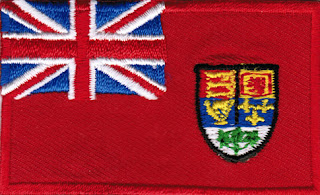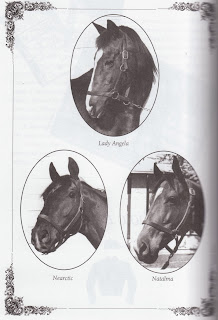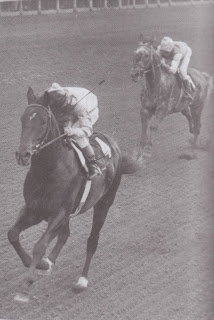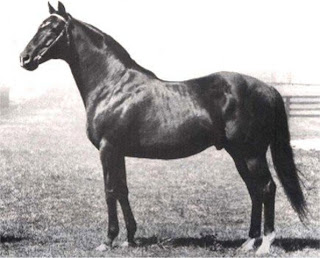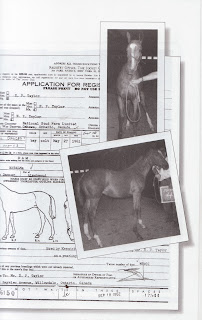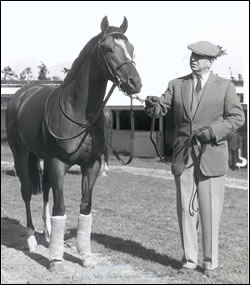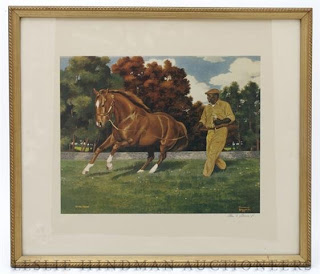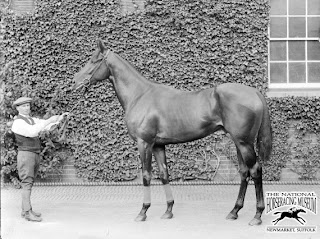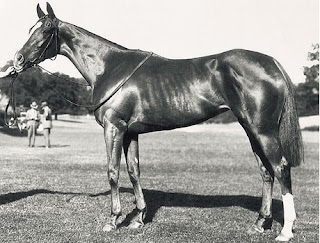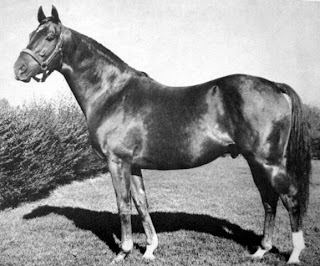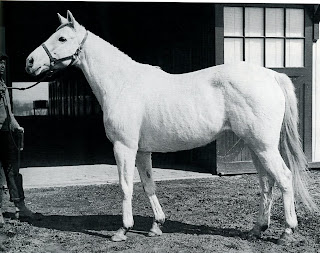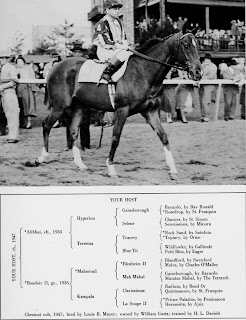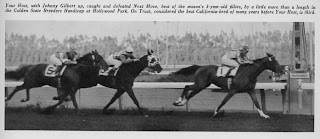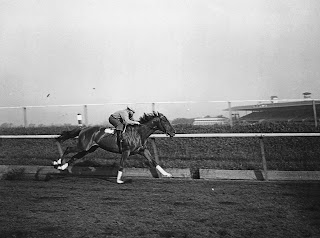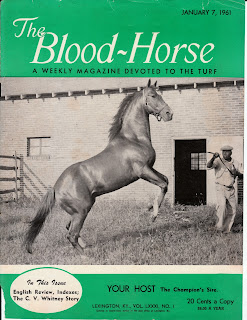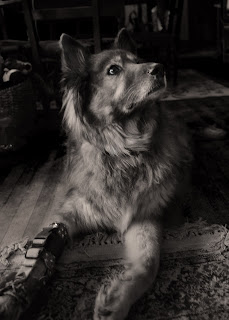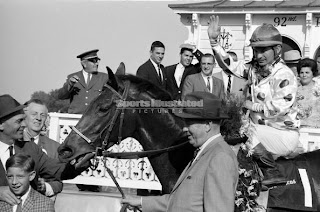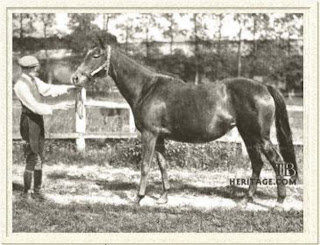AUGUST 14, 2015
Dear VAULT reader: As you know, THE VAULT published its very first article in 2011 and now enjoys a readership of over 280,000 worldwide. I cannot thank you all enough for your support and enthusiasm.
THE VAULT is a non-profit endeavour written out of love for the horses and the sport.
I felt it was time to find a way to give ‘payback,’ to use my efforts as a means of making a permanent contribution to the welfare of horses. Accordingly, I inaugurated a fund, in the name of THE VAULT, which will collect monies to be contributed towards organisations who specialize in horse rescue.
THE VAULT will feature the link below from this time on. Every few months I will post the monies that have been collected.
http://www.gofundme.com/8d2cher4
I thank you all for taking part in this endeavour. No donation is too small — every penny will help.
Thank you.
****************************************************************************************************************************************************************************************************
Until a day after the Wood Memorial, in which she had finished a game third, there was debate between trainer and owners as to whether she should run in the Kentucky Oaks or the Kentucky Derby …
… at the Derby quarter pole, it was the filly with the wide white blaze in the lead, Rockhill Native (1977) and Plugged Nickle (1977) hot on her heels. By the eighth pole, these two colts were fading, but now it was another pair, Rumbo (1977) and Jacklin Klugman (1977), who were making their run.
They weren’t good enough to catch her. At the finish it was all Genuine Risk — only the second filly, since Regret in 1915, to ever win the Kentucky Derby.
 |
| The finish of the 1980 Kentucky Derby — the filly sparkles! (Copyright the Chicago Tribune) |
Daunting as she was on the track, it’s just as daunting to take on Genuine Risk as a subject for this second feature story in our Kentucky Derby series. Her fans number in the legions, accompanying her from racetrack to breeding shed and into retirement. Had these same fans enjoyed the possibilities of 2011 media technology, they would have established a relationship with Team Genuine Risk comparable to the ones that burgeoned for Rachel Alexandra, Zenyatta and Barbaro. But they persevered despite the handicap, with the help of equine photographers like Barbara Livingston, Lydia Williams (LAW) and Anne Eberhardt and racing magazines that continued to check in with Genuine Risk throughout her long life. Genuine Risk was (and remains) a thoroughbred icon.
As is true for all of the individuals who attain legendary status, Genuine Risk was a horse brimming with personality and charisma. And, as was the case with many a thoroughbred star, her potential was not readily apparent as a youngster. One of the famous anecdotes about Genuine Risk was that had it not been for Bert and Diana Firestone’s young son of 14, Matthew, Genuine Risk would have gone unnoticed at the Fasig-Tipton Kentucky July yearling sale of 1978. Matthew was excited by her pedigree: she was by Exclusive Native (1963), whose son Affirmed (1975) had, only a few weeks earlier, won the Triple Crown. And, as if to shout it out, the filly bore an uncanny resemblance to her sire in colour and markings, right down to a common right hind stocking. So it was that young Matt first convinced his parents and Matthew Greene, the Firestone’s farm manager, to bid for Genuine Risk that July day — Matt who was given the task of bidding on the filly — and Matt who signed the winning $32,000 ticket on behalf of the Firestone family. (No surprise that the gifted teenager would go on to build his own career in the thoroughbred industry!)
Without question, Genuine Risk’s pedigree spoke loud of possibility and potential.
Not only had her sire produced the third Triple Crown winner in a decade, but her grandsire, Raise A Native (1961), was the sire of Affirmed’s nemesis, the outstanding Alydar (1975). Arguably even more impressively, Raise A Native also sired the incomparable Mr. Prospector (1970). He got other fine horses as well, notably Majestic Prince (1966), winner of The Kentucky Derby, Preakness and The Santa Anita Derby. (Majestic Prince would go on to sire Coastal {1976} and Majestic Light {1973}.)
 |
| Raise A Native, sire of the great Mr. Prospector and the grandsire of Genuine Risk |
 |
| Exclusive Native, sire of Genuine Risk |
 |
| The picture says it all: Raise A Native, Exclusive Native and Affirmed |
Genuine Risk’s dam, Virtuous (1971), was out of the champion Gallant Man (1954) by Due Respect II (1958), whose sire, Zucchero (1948) was by Nasrullah(1940). In England where he was born and raced, Zucchero won both the 1952 Princess of Wales Stakes and the 1953 Coronation Cup. Due Respect II’s dam, Auld Alliance (1948) had been bred by the prominent British horseman, Lord Rosebery, from the solid stallion Brantome (1931); Auld Alliance was also the dam of the American thoroughbred champion, Tomy Lee (1956). And, as if this weren’t enough, Genuine Risk’s pedigree over 4 generations also boasted, on her sire line, individuals like Shut Out (1939) a son of “the chocolate soldier,” Equipoise (1928) and the incomparable Native Dancer (1950), sire of Raise A Native. On her tail female were both Mahmoud (1933) who, in previous articles on THE VAULT keeps coming up in the pedigrees of contemporary champions, as well as Mah Iran (1939), a daughter of Mah Mahal (1928) by the sire Bahram (1932), the 1935 British Triple Crown winner. Mah Mahal, as you may remember, was a descendant of the important British sire, The Tetrach (1911), ranked internationally as the best 2 year-old of the twentieth century.
 |
| Virtuous, dam of Genuine Risk |
 |
| Zucchero, broodmare sire of Virtuous |
 |
| Mahmoud goes down to the post for the start of the 1936 Epsom Derby |
 |
| The Tetrarch: he was the best 2 year-old of the twentieth century |
 |
| A rare and blurry image of Mah Iran |
 |
| The outstanding Bahram, winner of the 1935 British Triple Crown |
Keeping in mind the potency of the X-chromosome Genuine Risk received from her dam, together with the undeniable influence of Gallant Man, who carried both Mah Iran and Mahmoud in his sire line, it would seem that Virtuous was a rather overly-modest name for such a fine individual. And it’s impossible not to love the sheer — if mysterious — beauty of exceptional sires and families who, over a century of breeding, combined to pass at least some of their greatness on to Virtuous’ daughter.
Genuine Risk’s grandsire, Gallant Man, was a smallish brown thoroughbred by Migoli (1944), a product of the Aga Khan III’s impeccible breeding program. A determined competitor, Migoli won the Dewhurst and 4 other races in England before being sent to France as a 4 year-old, where he annexed the 1948 Prix de l’Arc Triomphe. There would not to be another British-trained thoroughbred who would win the Arc until 1971. Migoli’s sire was Bois Roussel (1935), a son of Bahram. When mated to Majideh(1939), another product of the Aga Khan’s stud and a daughter of Mahmoud, the result was Gallant Man.
 |
| Migoli as a youngster, before the telling grey that linked him to Mah Iran had emerged. |
 |
| Majideh, the dam of Gallant Man |
Trained by John Nerud, Gallant Man is perhaps best-remembered for the peculiar circumstances of his loss to Iron Liege (1954) in the 1957 Kentucky Derby. As the story goes, jockey Bill Shoemaker misjudged the finish line and when he stood in the stirrups, Gallant Man began to slow down, allowing Iron Leige to nip him at the finish. But Gallant Man was a little horse with great stamina, shown in his absolute triumph in the Belmont Stakes that same year, which he won by a decisive 8 lengths over Bold Ruler (1954) setting a track record that stood until 1973, when Secretariat (1970) ran the race of a lifetime. Racing at 3 and 4, Gallant Man beat Bold Ruler again in the Metropolitan Mile and also took the Jockey Gold Cup against older horses. And although he beat the great Round Table (1954) twice, Gallant Man was never honoured as Horse of the Year. As a stallion, he sired 52 stakes winners; as a broodmare sire, he not only could lay claim to Genuine Risk, but also to another spectacular filly who was twice voted champion filly of the year, as well as being inducted into the Hall of Fame — Gallant Bloom (1966).
 |
| Iron Liege nips Gallant Man (outside) in the 1957 Kentucky Derby |
 |
| Gallant Man returns to win the Belmont Stakes decisively |
 |
| John Nerud with Gallant Man |
With a bloodline this spectacular how could the Firestone filly not be a champion?
…..Well, at the beginning, Genuine Risk was having none of it — not the saddle, not the rider and not the training! Just like so many of the great thoroughbreds that have appeared here in preceding stories, Genuine Risk was resistant to taking commands from humans, making her “very, very tough” to break and, initially, to train. It’s easy to sympathize with the threat such changes represent to a yearling, perhaps especially since they demand an unconditional surrender to the unknown. John “Buck” Moore, who was with Genuine Risk from the moment she arrived at the Firestone’s facility was the man who broke her, rode her and cared for her throughout her long life. He knew her perhaps the best of anyone and felt that her attitude towards accepting saddle and bit had to do with her having a mind of her own. Interviewed in the Blood-Horse (April 30, 2005), Moore explained, “…She bucked a lot and she would try you. But there is not a mean bone in her body. She just wants to tell you that, ‘Hey, I’m not laying down and rolling over when you say so.'” (pp.2629)
The youngster may have been a tough customer to acclimatize to her new vocation, but it was exactly this kind of fighting spirit that would also make her a strong competitor when she hit the track. As her trainer, Hall of Famer Leroy Jolley would later say, “There’s no give-up in her.” Jolley, the son of trainer Moody Jolley, was a private man, not unlike Genuine Risk’s owners. He had trained Ridan(1959) and would go on to train Foolish Pleasure (1975) before the daughter of Exclusive Native joined his stable.
 |
| Are you looking at me? The power and beauty of Genuine Risk, shown here in 1980 with her regular exercise rider, Luis Ortiz. |
Genuine Risk’s 2 year-old season was faultless. Teamed with jockey Jacinto Vasquez, who would go on to ride her in every race save one throughout her career, the filly broke her maiden at first asking in a maiden special weight at Belmont in September 1979. Two weeks later, Genuine Risk charged to a seven and a quarter length victory over a fast track in an allowance race at Aqueduct. A month later, the filly started in the Tempted Stakes, a mile run intended to give her connections a sense of whether or not she could beat a classier field: Genuine Risk took it easily, winning by 3 lengths. And even though it was only her third start, Vasquez was immensely proud of Genuine Risk’s effort. In his view, she was good enough to take on colts. She closed out the year with a gutsy battle to the wire in the Demoiselle, over a distance of a mile and an eighth. In a three-wide move on the final turn, Genuine Risk headed for the lead, to be challenged by Smart Angle. They came to the finish head-to-head, but it was Genuine Risk’s white blaze that crossed the line first. Finishing her first season undefeated, Genuine Risk travelled to Florida with the other Jolley horses to prepare for her 3 year-old campaign.
 |
| Assistant trainer, John Nazareth, leads “Genny,” as she was nicknamed by the press, off the track after a work at Pimlico |
After winning her first race at Gulfstream Park, Jolley shipped Genuine Risk back to Aqueduct where she ran in a mile handicap for fillies. Again Genuine Risk came home a winner, but in a time that suggested her sixth consecutive victory had put little into her. Jolley knew only too well that to go to Kentucky in May with a solid chance of winning, Genuine Risk needed a better prep than Aqueduct had given her. By all accounts, the trainer wasn’t sold on entering the filly in the Wood Memorial but after discussions with her owners, he reconsidered. Being a thoroughbred who always gave it her best, Genuine Risk ran a game race in the Wood, finishing third behind Plugged Nickle and Colonel Moran (1977). The former had actually bumped into her in the stretch, carrying her wide, an incident that made coming in third even more impressive. Genuine Risk was a big, strong filly and even though she went back to the barn with a few scratches, she seemed her usual self the next morning. But Jolley suspected that the Wood had taken a lot out of her and so it was that the trainer pushed running Genuine Risk in the Kentucky Oaks rather than the Derby. The Firestone’s saw it differently. Quite simply, in their filly’s gutsy battle to third place in the Wood, they saw that Genuine Risk had earned the right to face the colts again.
And so we return to the beginning, to the elegant chestnut with the will to win crossing the wire a length ahead of a colt named Rumbo to become only the second filly to ever win the Kentucky Derby. And how she had triumphed! Genuine Risk dominated the field for the final half-mile, running quarters of :24 4/5, :24, :24 2/5 and :24 2/5 to finish in a final time that was faster than that of the great Spectacular Bid (1976), the 1979 Derby winner. Her final time of 2:02 was also 2 3/5 seconds short of the track record held by Secretariat (1970).
(Apologies for the quality of the footage, but it was the only visual I could locate…..)
 |
| One of photographer Tony Leonard’s shots of Genuine Risk and her first foal, Genuine Reward |
 |
| The handsome Genuine Reward, all grown up! |
 |
| The equally handsome Westley, aka Count Our Blessing |


